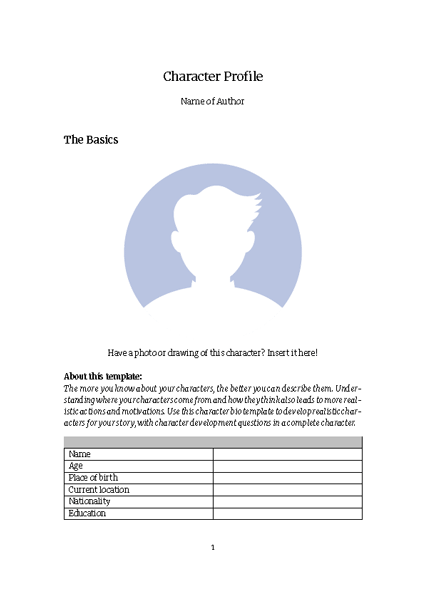Writing can be a rewarding and fulfilling experience, but for many beginner writers, it can also be a daunting and challenging task. Whether you are starting a new creative project or trying to improve your writing skills, there are many tips and tricks that can help you to develop your craft and create compelling and engaging writing. And whether you're an aspiring writer or someone who's been writing for years, there's always room for improvement.

Whether you are writing fiction, non-fiction, or anything in between, these tips and tricks can help you to become a more confident and skilled writer, and to achieve your goals and aspirations as a writer.
Read on to find out more about some of the most important strategies for beginner writers, from developing strong characters and creating tension, to using descriptive language and editing your work!
What is Good Story Writing?
Good story writing can be defined in different ways depending on the preferences of the reader or the genre of the story. However, some common characteristics of good story writing include:
Engaging characters - Characters are the heart of a story, and good story writing involves creating characters that are well-rounded, interesting, and relatable.
Strong plot - A good story has a well-developed and well-paced plot that keeps the reader engaged and invested in the story.
Effective use of language - Good story writing involves the use of language that is clear, concise, and effective in conveying the intended message and emotions of the story.
Setting and atmosphere - The setting and atmosphere of the story should be well-described and immersive, creating a vivid and memorable world for the reader to experience.
Conflict and tension - Effective story writing involves creating conflict and tension that keeps the reader engaged and invested in the outcome of the story.
Themes and motifs - A good story has underlying themes and motifs that add depth and meaning to the narrative, and that can resonate with the reader on a personal level.
Resonance and impact - A good story has a lasting impact on the reader, leaving them with something to think about or feel after they have finished reading.

What is Good Writing vs Bad Writing?
Good writing is effective and engaging, while bad writing is confusing and unappealing. Good writing is clear, concise, and well-organized, while bad writing is often characterized by unclear or convoluted language, grammatical errors, and poor organization.
Good writing is also focused on conveying the intended message in a way that is easy for the reader to understand and connect with. It uses language effectively to create a vivid and memorable world for the reader to experience and can evoke strong emotions or provoke deep thought.

In contrast, bad writing can be difficult to follow, and may leave the reader feeling confused or disinterested. It can be characterized by weak or underdeveloped characters, a poorly paced or uninteresting plot, and a lack of attention to detail or accuracy.
Ultimately, good writing is writing that effectively conveys the intended message to the reader in a way that is engaging and memorable, while bad writing fails to do so, often due to a lack of clarity, focus, or skill.
Tips for Writing Better Stories for Beginners
1. Start with a clear idea
Starting with a clear idea is essential for beginner writers because it provides a roadmap for the story. Without a clear idea, it's easy to get lost in the writing process and end up with a disjointed, confusing story. Having a clear idea of the story's premise, characters, and plot helps the writer stay focused and on track.
Starting with a clear idea also helps the writer communicate their story effectively to readers. A well-defined premise and plot give readers a sense of what to expect from the story, making it easier for them to follow along and understand the story's message.
Furthermore, starting with a clear idea can help the writer avoid writer's block. When the writer knows what they want to say and where the story is headed, they're less likely to get stuck and more likely to make steady progress.
2. Create compelling characters
Creating compelling characters is essential for beginner writers because characters are the heart of any story. Characters are what make the reader care about the story and keep them invested in the narrative. A story with flat, uninteresting characters is unlikely to engage readers and is likely to be quickly forgotten.

Compelling characters have unique personalities, goals, and motivations that make them relatable and interesting to readers. They have strengths and weaknesses, and they face challenges that force them to grow and change throughout the story. Compelling characters also help the writer to explore important themes and issues. Through the character's experiences and interactions with other characters, the writer can explore complex issues such as identity, morality, and social justice.
Moreover, compelling characters can also help the writer to create a more memorable and immersive story. When readers connect with the characters, they're more likely to remember the story and recommend it to others.
Before you work diving deep into your characters and into the different relationships that your story's characters would have with each other, you have to be familiar with all aspects of their personality first. And the best way to do that is by creating some character profiles.

If you are unsure of how to start a character profile, consider trying JotterPad's Character Profile template to do so. All-rounded character profiles allow writers to delve into the psyche of their characters and tease their personalities out throughout the story. This all-rounded character profiles allow you to dive deeper into multiple aspects of your characters; physical, mental, emotional, and historical. With these elements laid out for you in an organized manner, you can build a robust character by exploring these multiple aspects of characterization, making your characters stand out and apart from each other through this template.
3. Use descriptive language
Using descriptive language is important for beginner writers because it helps to bring the story to life and create a vivid, immersive experience for the reader. Good writing uses sensory details to engage the reader's imagination and evoke their emotions.
Descriptive language can help to set the mood and tone of the story, making it easier for the reader to understand and appreciate the story's message. For example, if the story takes place in a creepy, abandoned house, the writer can use descriptive language to create a sense of foreboding and unease.
Descriptive language can also be used to create more memorable and engaging characters. By using vivid descriptions of a character's appearance, personality, and behavior, the writer can make the character more relatable and interesting to readers. Moreover, descriptive language can help to create a more immersive and believable world. By describing the sights, sounds, smells, and textures of the world, the writer can make the story feel more real and help the reader to imagine themselves in that world.
4. "Show, don't tell"
One of the most common mistakes that beginner writers make is telling instead of showing. For example, instead of saying "John was sad," show the reader that John is sad by describing his facial expressions, body language, and actions.
"Show, don't tell" is a common writing principle that encourages writers to use descriptive language and sensory details to help the reader visualize the story, rather than just stating facts or telling the reader how to feel. For beginner writers, remembering to "show, don't tell" is an essential technique for creating more engaging and immersive writing.
When a writer "shows" the story, they use sensory details, actions, and dialogue to help the reader experience the story for themselves. For example, instead of telling the reader that a character is angry, the writer can show the character clenching their fists, speaking in a harsh tone, and storming out of the room. This helps the reader to feel the character's anger and experience the story in a more immediate and engaging way.
On the other hand, when a writer "tells" the story, they simply state facts or emotions without providing enough details for the reader to fully engage with the story. For example, telling the reader that a character is sad without showing how they're feeling or acting in response to their sadness can make the story feel flat and unengaging.
5. Create tension
Tension is what keeps readers invested in a story. Without tension, there's no reason for the reader to keep turning the pages. Creating tension is one of the most important elements of writing for beginner writers because it helps to make the story more engaging and keeps the reader invested in the narrative. Tension creates a sense of anticipation and uncertainty, which can make the reader eager to know what happens next.
Tension can be created through a variety of means, including conflict between characters, unexpected plot twists, and time-sensitive situations. By introducing tension into the story, the writer can create a sense of urgency and keep the reader on the edge of their seat.

Moreover, tension can also help to reveal more about the characters and their motivations. When characters are put under pressure, their true selves are often revealed, and the reader can learn more about their strengths, weaknesses, and values. Creating tension also helps to keep the story moving forward and prevent it from becoming stagnant. When tension is present, the reader is more likely to keep reading to find out what happens next, and the story is less likely to become bogged down in exposition or description.
6. Edit, edit, edit!
Editing is an essential part of the writing process for beginner writers, as it helps to refine and polish their work. Good writing is often the result of multiple drafts and revisions, and editing plays a crucial role in improving the clarity, coherence, and effectiveness of the writing.
One important reason for editing is to correct any spelling, grammar, or punctuation errors that may have been made during the initial drafting process. These errors can distract the reader from the content of the writing and can also convey a lack of professionalism and attention to detail.
If you want to take care of things like spelling and formatting from the start of your writing process, JotterPad can guide your writing and take care of the formatting requirements for your novel for you. With an array of novel writing templates for you to choose from to best suit the genre that you're working on, these templates can help expedite your writing endeavors by serving as bedrocks for you to build your story upon. After writing, you get to see your story in the form of a fully furnished novel without worrying about the formatting getting muddled up along the way.

The wide array of novel and book-writing template options available on JotterPad are easy and hassle-free to use. Open JotterPad's web editor, select "New Document", select "New from Template", search for your desired template through phrases or filter templates, and start writing.
Another important reason for editing, apart from taking care of the nitty gritty formatting details, is to improve the overall flow and organization of the writing. This can include reordering paragraphs, restructuring sentences, or cutting out unnecessary information. By doing so, the writer can make the writing more readable and accessible to the reader and can help to ensure that the main message of the writing is clear and concise.
Editing can also help the writer to identify areas of their writing that may need further development or clarification. By re-reading their work and critically evaluating the content, the writer can gain a deeper understanding of the strengths and weaknesses of their writing and can make improvements as necessary.
Writing is a journey that requires practice, patience, and perseverance. As a beginner writer, it is important to remember that writing is not about perfection, but about expressing yourself in a way that is authentic and meaningful to you.
With the tips and tricks outlined in this blog, being able to distinguish good writing vs bad writing, and using tools such as Character Profile templates and writing platforms like JotterPad, you can develop your writing skills and create compelling and engaging stories that resonate with readers. Whether you are writing for pleasure, for self-expression, or for publication, the key to success is to keep writing, keep learning, and keep pushing yourself to grow and develop as a writer.

